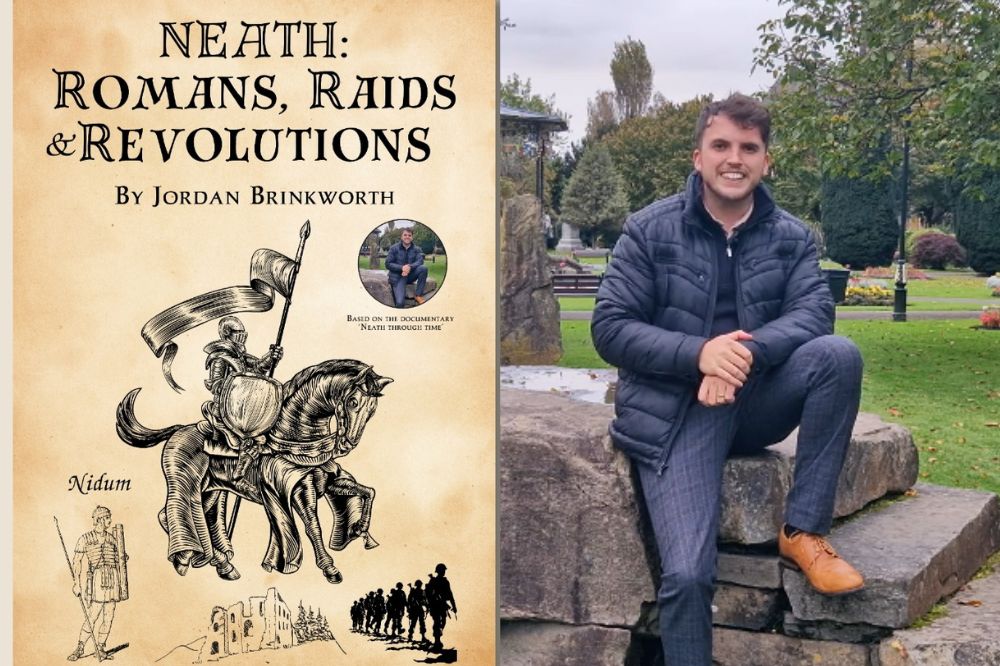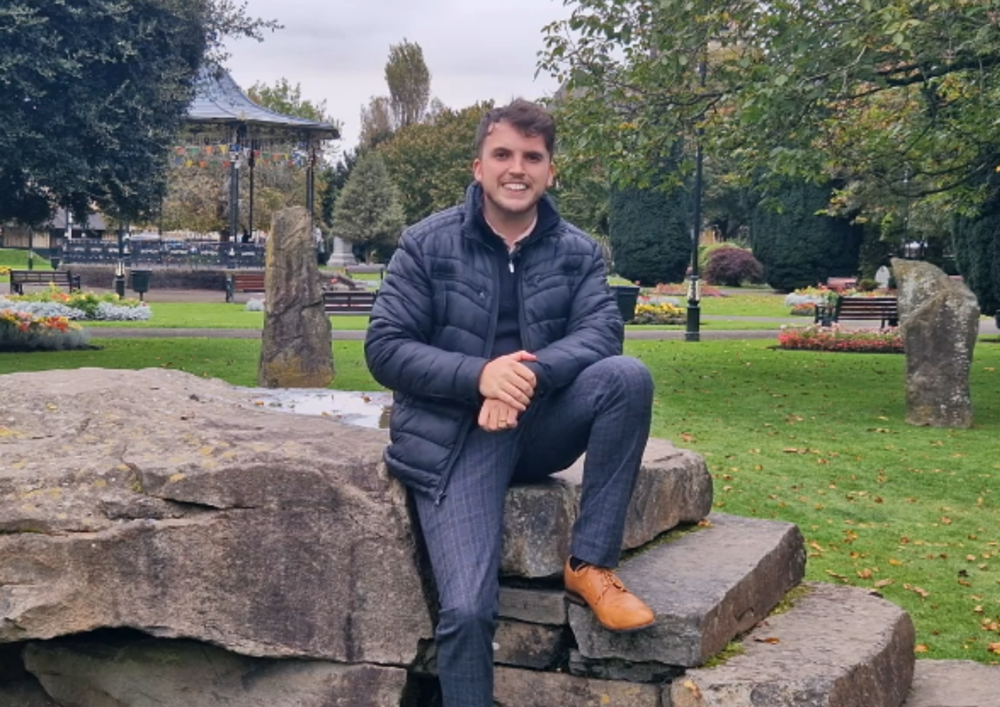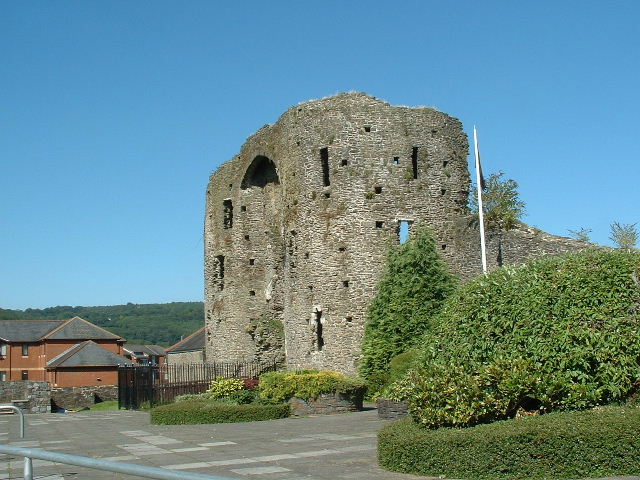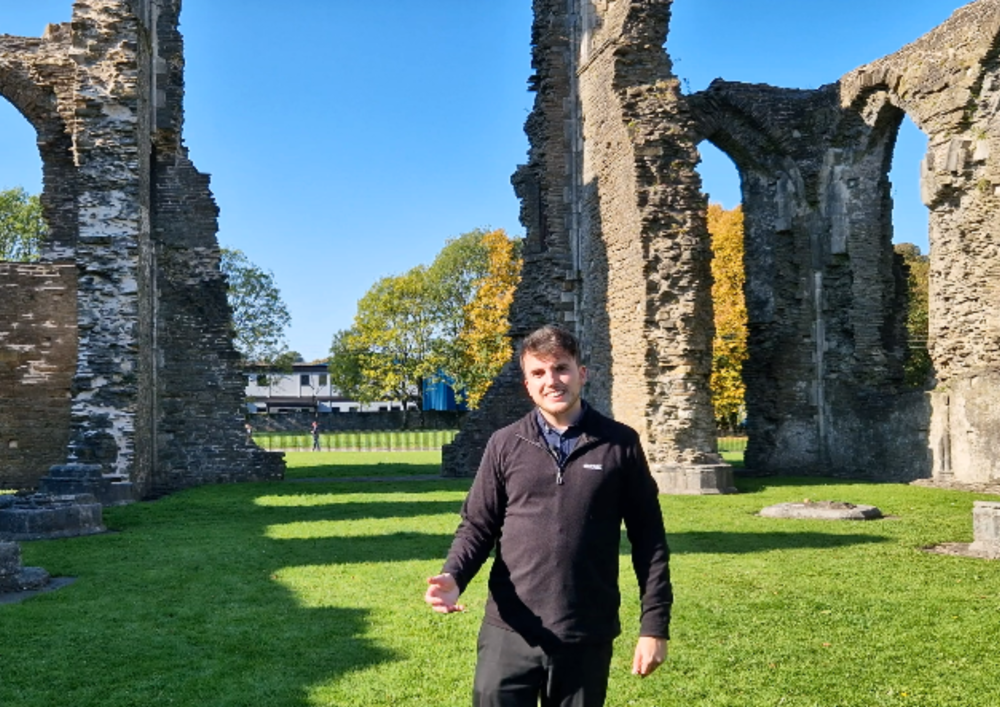Author shines a spotlight on county’s hidden histories

Stephen Price
A Welsh historian has put decades of his own love, dedication and research into his home county of Neath into a new book which journeys through the area’s rich history – from the Stone Age and the Romans to Norman Knights and the Second World War.
Jordan Brinkworth is a talented storyteller, having written and presented the documentary, Neath Through Time and previously holding the role of the former Editor of Art Etc. Magazine, and his aim is to convey history in an easily accessible and exciting way.
As a Neath local who curated the 2024 Neath History Exhibition, Jordan has close ties to the town and his new book, Neath: Romans, Raids & Revolutions is a very personal affair, sharing snippets of his moving and thrilling family history.
In this unique history book, Jordan demonstrates something so utterly Welsh, in that so many of the historic events are linked to him, and to the people of the town today.
Be it his great-uncle who was on the HMS Gloucester when it sank, his grandmother, whose house was bombed in the Second World War, or his great grandpa Dick who had a grenade thrown at him – his stories not only help to shape the reader’s understanding of Neath but make it a personal and exciting one.
Determination
Jordan was born and raised in Neath and spent his entire childhood and teenage years writing novels, reading history books and acting in the theatre.
He told us: “I graduated from Swansea University with a Master’s degree in History and volunteered in the South Wales Miners Museum, before then working in two finance jobs in Cardiff, which for me were extremely boring. After two years in that sector, and having written for the Cardiff Times in my spare time, I thought to myself “do I really want to be working in an office my whole life?”

“So I left that world and set up my own art publication called Art Etc. Magazine. I was not a practising artist, but I was passionate about history and the past is all about human perception – and what better way, I thought, to uncover our perspectives than through our artworks?”
“It was tough at first, as I had nothing but a notepad to get it up-and-running (as I had to return my laptop when I left my old company). Over three years however, after securing various grants and many late nights, I managed to build the magazine up to a point where it had a great many subscribers, advertisers, stockists and marvellous contributors.
“During this time, I also moved back to Neath, and, through the magazine, I was invited to participate in the 2024 Neath Arts Festival. Still being a massive history enthusiast, I suggested to the organisers that there should be a history exhibition – something which they then invited me to curate.”

We asked Jordan why he’s so passionate about his home town. He said: “Neath is an ancient place. Though I didn’t realise quite how exciting it was until I started researching the history of the town for the exhibition.
“It was quite difficult to join the dots at first. The last historical study of the town had been conducted by George Eaton in the 1980s. Yet once I started piecing it all together, I realised how absolutely ‘class’, to coin a local phrase, the history of the town was.
“Archaeological evidence suggests that humans have lived within the Neath Valley since Mesolithic times, around 10,000 years ago. During that time the area has borne witness to many exciting, tragic and violent events – from Celtic, Roman and Viking invasions to catapults hurling rocks at Neath Castle and the establishment of the Rugby Union.”
“Uxoriousness?!”
Accessibility is key when it comes to history and storytelling, he believes. He shared: “History, however, can be conveyed in quite a mundane way. Not everyone wants to read 500 pages of economic or legal history.
“Nor do many people understand or enjoy the highbrow rhetoric many historians frequently use (only last week I read the word ‘uxoriousness’ in a ‘best-selling’ history book).
“Consequently, I wanted to curate an exhibition that presented the town’s history in an easily accessible way. So, with the help of the Neath Arts Festival and local drama groups, I was able to put together a history exhibition that, through numerous costumes, display boards and a documentary film I wrote and presented, detailed the history of Neath from the Ice Age to the modern day.
“Toward the end of the exhibition however, a visitor asked me, ‘where can I read this information later on?’
‘Hmmm, well nowhere, once it’s gone, it’s gone,’ I thought. ‘I know, I’ll write a book.’
Eager to start this new project, Jordan decided to stop producing the magazine to instead write a short and accessible history book about Neath that captured all the most exciting parts of its past.
His book, Neath: Romans, Raids & Revolutions, was published on 6 February 2025.
“Morale boost”
Jordan’s fascination for his square mile is infectious. He said: “The local Celtic tribe in Neath, the Silures, were so fearsome that the Romans had to station 1,000 troops here – a huge number for the time.
“There may have been three castles in the town at one point; two on the river and one in Cimla – which, in Norman times, would have been Neath’s wild frontier.
“Having been instated by a charter in 1280, the Neath fair is likely to be the oldest fair in Wales. On an interesting note, Neath was also one of the first testing grounds for English colonisation – a process which would later be repeated in Ireland, and eventually, one quarter of the world’s landmass.

Jordan would like to see more Welsh history, with a local slant, in Welsh schools. He told Nation.Cymru: “Historic England’s 2009 Heritage Counts Report for instance, states that people who have a greater understanding of their local history are more likely to take greater pride in where they live and are therefore less likely to commit crimes in their local area.
“Indeed, at a time when south Wales in particular is suffering from deindustrialisation and unemployment, local history classes and cultural projects could act as a marvellous morale boost for many local communities.”
He added: “As a part of the exhibition, I also wrote and presented an hour-long documentary called Neath Through Time, which was very well received and was recently screened in the Neath Little Theatre.
“There were 220 people in attendance, which shows that there is a real appetite within the area to learn about the town’s history. I sincerely hope that such a positive response encourages the council, and the Welsh Government, to focus upon building a permanent museum or exhibition in the town.
“There has been a lot of funding made available in the region recently, but a great deal of it has been spent on the hospitality sector. Don’t’ get me wrong, I love a good pint, but surely in a town of already 15+ pubs there should be money to spare for a cultural institution?
“The term cynefin, which can be used to describe a person’s cultural and historical ties to their native localities, is also being increasingly used within schools and community bodies. I think such an initiative should be extended to include the teaching of local history in classrooms and funding for further history exhibitions.”

As well as the book, Jordan has been busy writing and presenting the history documentary, Neath Through Time, and he says he would love to write and present further films about other areas in Wales.
He said: “The incredibly interesting history of our country has been seriously overlooked in the media, and I would be overjoyed to produce further documentaries about exciting areas of Welsh history (I would welcome any invitations from ITV, BBC or Channel 4!).
“In doing so, I would like to make people realise just how exciting the history of Wales is.”
Jordan’s fascinating new book and his documentary can be purchased via his website
https://jordanbrinkworth.wordpress.com/
Support our Nation today
For the price of a cup of coffee a month you can help us create an independent, not-for-profit, national news service for the people of Wales, by the people of Wales.





Hanes Cymru…it is all around us in four dimensions and visible to the naked eye…
Well done.
Mae Castell Nedd yn Sir Forgannwg.Neath is in the county of Glamorgan.
Historically, yes. Ond heddiw/Today, Cyngor Castell Nedd Port Talbot / Neath Port Talbot Council